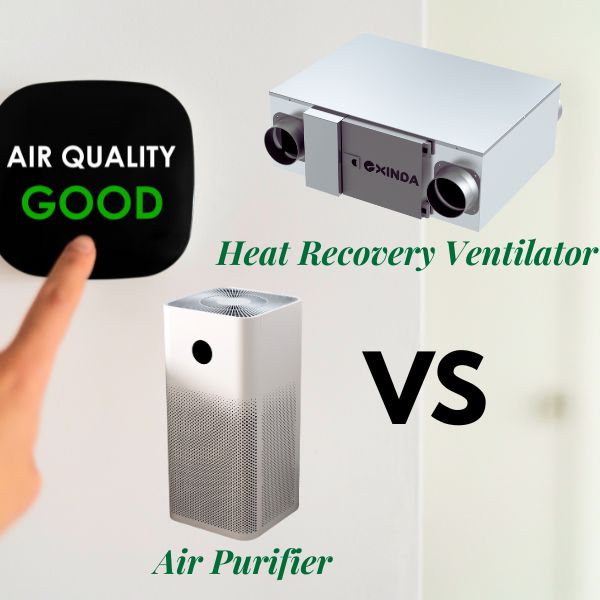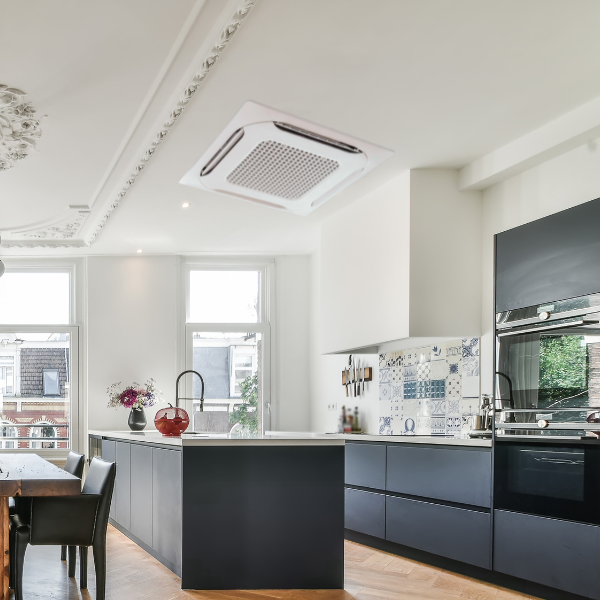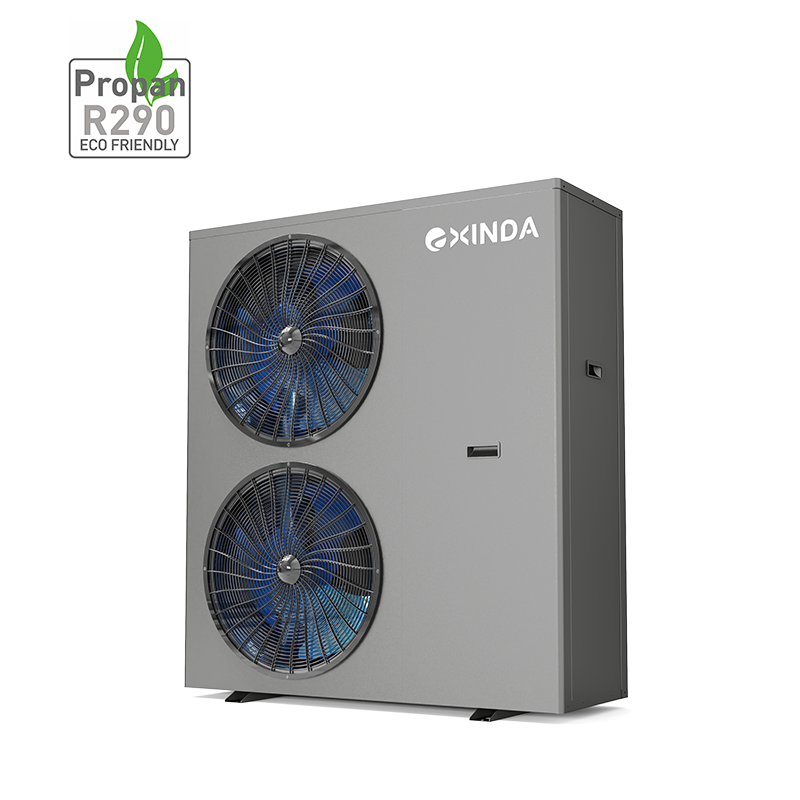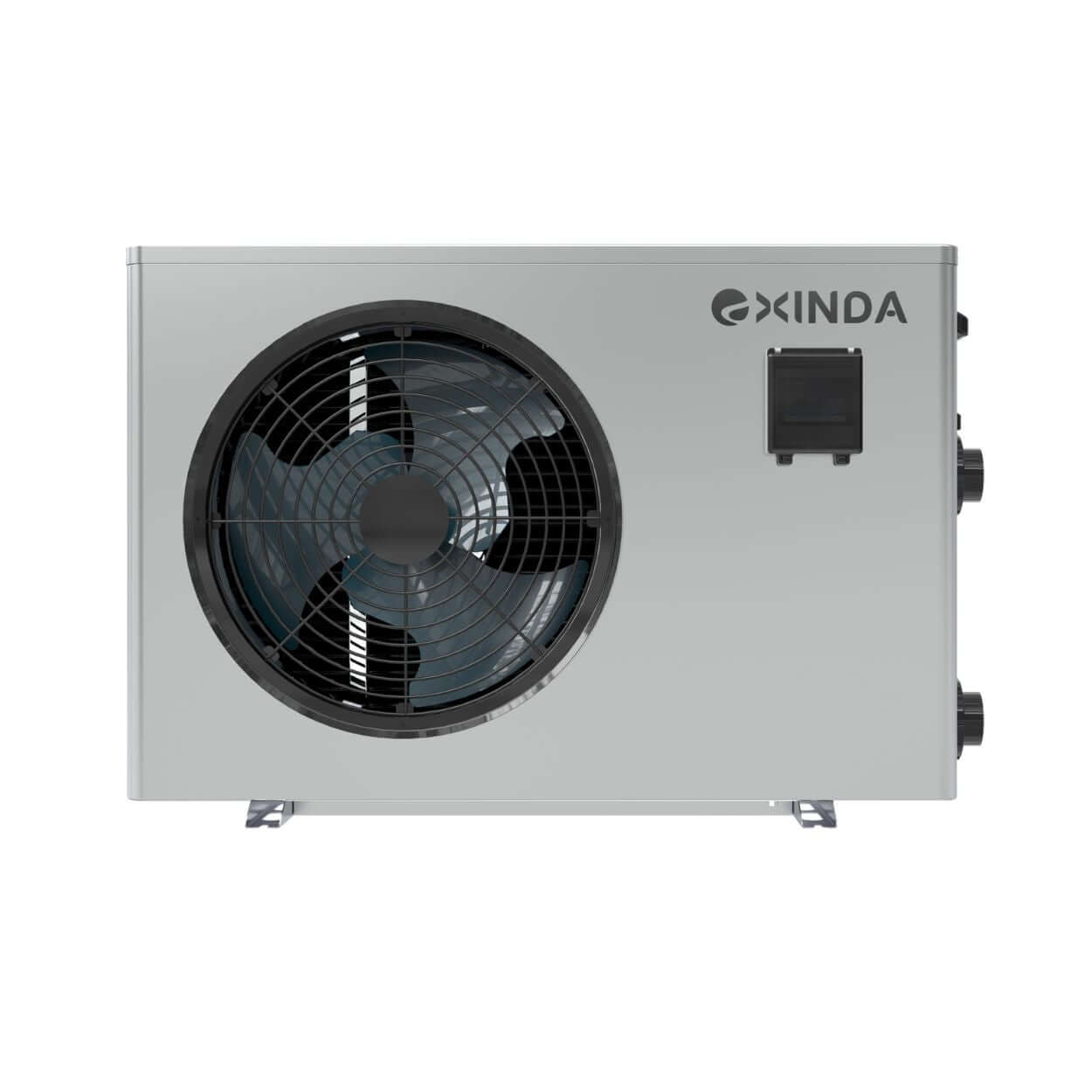
In the realm of indoor air quality enhancement, two stalwart guardians stand tall, each with its unique prowess and purpose: the Heat Recovery Ventilator (HRV) and the Air Purifier. As we navigate the complexities of modern living, the importance of breathing clean, fresh air within buildings becomes increasingly evident. Yet, among the assortment of choices, understanding the distinctions between the Heat Recovery Ventilator (HRV) and the Air Purifier is paramount.
This article will embark on a journey of discovery, delving into the fundamental disparities between the Heat Recovery Ventilator (HRV)and the Air Purifier. By unraveling their distinct mechanisms, functionalities, and applications, this comprehensive guide seeks to illuminate the path toward informed decision-making for suppliers in the home appliances field or residential building contractors.
Table of contents
- Heat Recovery Ventilator and Air Purifier Differences in Primary Function.
- Heat Recovery Ventilator and Air Purifier Differences in heat recovery and filtration.
- Heat Recovery Ventilator and Air Purifier Differences in energy efficiency.
- Heat Recovery Ventilator and Air Purifier Differences in installation and placement.
- Heat Recovery Ventilator is more marketable.
Primary Function
Heat Recovery Ventilator (HRV)
Heat Recovery Ventilator is a ventilation system designed to exchange stale indoor air with fresh outdoor air while recovering heat from the outgoing air stream.

Heat Recovery Ventilator systems help improve indoor air quality by diluting indoor pollutants and replenishing oxygen levels while minimizing energy loss by transferring heat between the incoming and outgoing air streams. Heat Recovery Ventilator systems can ensure a steady flow of oxygen-rich air, which is essential for maintaining indoor air quality and preventing the buildup of pollutants.
Air Purifier
Air Purifier devices designed to remove airborne contaminants such as dust, pollen, pet dander, mold spores, smoke particles, and volatile organic compounds (VOCs) from indoor air. They utilize various filtration technologies to capture or neutralize pollutants and improve indoor air quality.

Heat Recovery and Filtration
Heat Recovery Ventilator (HRV)
 Heat Recovery Ventilation Working Principle - Heat Exchange for Fresh Air Supply
Heat Recovery Ventilation Working Principle - Heat Exchange for Fresh Air SupplyHeat Recovery Ventilator focuses on heat recovery and ventilation, transferring heat from the outgoing air to the incoming air to maintain indoor temperature and humidity levels while minimizing energy loss. Heat Recovery Ventilator systems can help maintain balanced indoor humidity levels by transferring moisture between the incoming and outgoing air streams. This is particularly advantageous in climates where indoor humidity can fluctuate significantly.
Air Purifier
Air Purifier systems focus on filtration or purification methods to remove airborne contaminants, with heat recovery being secondary or not present at all in most models. Most air purifiers do not directly address humidity control unless they are integrated with additional features.
Energy Efficiency
Heat Recovery Ventilator (HRV)
Heat Recovery Ventilator is designed to improve energy efficiency by recovering heat from the outgoing air stream, reducing the need for additional heating or cooling to maintain indoor comfort. This heat exchange process helps to minimize energy loss associated with ventilation, making Heat Recovery Ventilator systems more energy-efficient.

The power and energy consumption of the Heat Recovery Ventilator
Air Purifier
Air Purifier systems may consume electricity to operate fans, filtration, and purification systems because they do not directly recover heat or contribute to energy efficiency in the same way as Heat Recovery Ventilator systems. For example, an air purifier with a Medical-Grade H13 HEPA filter and three fan speeds may consume 0.015 kWh at low speed, 0.033 at medium speed, and 0.081 kWh at high speed.
Installation and Placement
Heat Recovery Ventilator (HRV)
Heat Recovery Ventilator typically installed as a part of a building's HVAC system. Heat Recovery Ventilator commonly installed in utility rooms, basements, or mechanical rooms. Heat Recovery Ventilator systems provide balanced ventilation throughout the entire home or building. This ensures consistent indoor air quality in all living spaces. Moreover, Heat Recovery Ventilator systems include devices and accessory components that are easy and convenient to install even without specialized technicians.

Exinda's ventilation experts can provide one-stop service from design, layout, commissioning, and after-sales, helping to design the best Heat Recovery Ventilator system for tailor-made projects. Exinda is your professional partner. Please inquire if you need to know!
Air Purifier
Air Purifier systems are standalone devices that need to be placed in various locations within the building. Air Purifier systems are usually localized devices that only treat the air in a specific room or area, requiring multiple units for comprehensive coverage. Air Purifier systems will take up a certain amount of space, resulting in a building that looks like it lacks uniformity and coordination. Air purifiers may become the presence of dangerous hazards in the building.
Heat Recovery Ventilator is more marketable
Overall, Heat Recovery Ventilator systems provide a holistic approach to indoor air quality management, offering continuous ventilation, heat recovery, humidity control, cost-effective operation, and a natural alternative to chemical-based purification methods.

These advantages make Heat Recovery Ventilator an indispensable tool for creating healthier and more comfortable indoor environments.
About Exinda

Exinda, as a famous manufacturer of energy-saving electrical and heating components appliances, always adheres to the customer-oriented service concept, pays attention to technical innovation, and meets customer needs.
Exinda invested a lot of resources in R & D and developed several industry-leading heating components and energy-saving electrical products, to provide customers with efficient, energy-saving solutions.
Exinda Group's product series includes:
- Heat Recovery Ventilator
- Energy Recovery Ventilator
- Air Source DC Inverter Heat Pumps
- Commercial Air to Water Heat Pumps
- Swimming Pool Heat Pumps
- Customized Products and Solutions
...
Exinda is committed to providing customers with quality products and services. Welcome to contact us!







